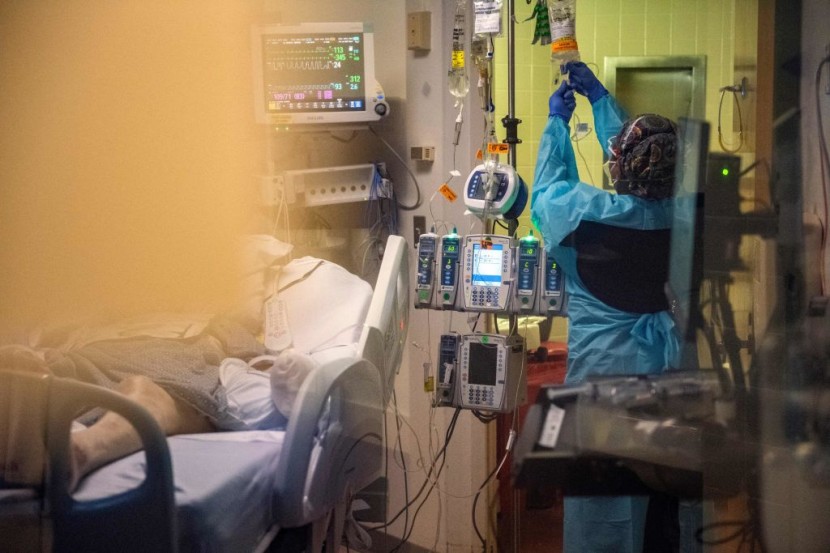
Because of a YouTube video, the story of a 19-year-old student who acquired sepsis and lost his legs after eating leftover food has gone viral globally.
The case of the guy from New England, named only as "JC," was initially reported in The New England Journal of Medicine last March. The video has been seen over 900,000 times.
Teen Loses Both Fingers, Legs After Eating Leftovers
According to the study's authors, JC was admitted to the pediatric intensive care unit (PICU) due to "shock, multiple organ failure, and rash." When he arrived at Massachusetts General Hospital, JC had a severe high temperature of over 105 degrees Fahrenheit and a heart rate of 166 beats per minute, which was higher than the average heart rate for his age resulting from vigorous exercise.
After being sedated, the patient developed a purple rash and was evacuated to the hospital's PICU. The rash quickly spread across JC's face, chest, belly, back, arms, and legs, sparing only his palms and foot soles. This was a sign that his skin was deteriorating.
Amputations of sections of all ten of JC's fingers and amputations of his legs below the knees were required due to necrosis of his arms and legs and the development of gangrene. The patient had been OK until 20 hours before admission when he began to develop diffused stomach discomfort and nausea after eating leftover rice, chicken, and lo mein from a restaurant lunch.
Vomiting bouts ensued, along with cold, weakness, chest pains, headaches, neck stiffness, and even hazy eyesight. A buddy opted to take him to the hospital when his skin grew darkened around five hours before admission.
A guy who had eaten the same dinner informed hospital officials that he had vomited once thereafter but hadn't gotten any sicker. The young guy, who worked part-time in a restaurant and stayed with a friend for five days after being accepted to college, was diagnosed with Neisseria meningitidis, a potentially fatal bacterial infection that caused his blood to clot and his liver to fail, after blood and urine tests, Newsweek via MSN reported.
Doctors allegedly amputated both legs below the knees, as well as portions of all fingers. JC was diagnosed with purpura fulminans owing to meningococcemia despite having had all of his childhood vaccines and appearing to be in good condition.
He'd been living with a friend for five days, although he still resided in northern New England with his mother and brother, working part-time at a restaurant. JC had not had all of his meningococcal immunizations, it was subsequently discovered.
Considering the severity of the illness, the patient "had a reasonably decent recovery," according to the medical journal article.
How To Avoid This Deadly Condition?
To prevent consuming germs, the US Department of Agriculture suggests carefully keeping leftover food in the refrigerator or freezer and then cooking it to a high enough temperature (165 degrees) to avoid ingesting bacteria that are tasteless and odorless.
According to WebMD, bacteria may multiply fast in food left at room temperature, reducing the risk of food poisoning. After removing leftover food from a heat source such as an oven or warming pan, it should be refrigerated within 2 hours.
According to the website, the misconception that food must be allowed to cool before being refrigerated is false, and hot items can be placed right in the refrigerator.
WebMD recommends separating dishes into small portions and storing them in leak-proof bags in ice water basins if people wish to chill their meals faster.
When it comes to leftover takeaway food, WebMD recommends avoiding waiting until it smells bad before throwing it out since bacteria may hide in places where they can't be seen or smelled. In addition, the website warns against consuming cold leftover takeout meals.
"To destroy hazardous germs, heat food to 165 F. A food thermometer is the best method to check if it has reached that temperature." "Place it in different spots, especially the thickest or deepest section, because dishes might cook unevenly." 165 degrees Fahrenheit is hot enough to destroy germs and viruses, as per Fox 8.
Related Article : Bird Flu Alert Raised in Vermont; How Would It Impact US Poultry Supply?
@YouTube
© 2025 HNGN, All rights reserved. Do not reproduce without permission.








